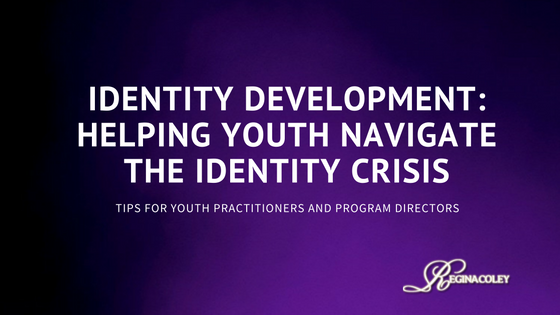The question, “Who am I?” is especially pertinent during adolescence. The combination of physical, cognitive, and social changes that occur during that time, plus the serious life choices to be faced (occupation, life partner) spur what Erik Erikson famously called an identity crisis. He used the term, “crisis,” to mean a turning point rather than a period of profound or debilitating uncertainty. Erikson acknowledged that identity issues could arise throughout the life course, but saw identity formation as the critical “developmental task” of adolescence.
Our identity is how we see ourself. Understanding the many aspects of how youth have to view themselves and their place in the world. They are responsible for making decisions as to where to attend college, their sexual orientation, their future career, what culture they resonate with, the company they’re keeping and their racial identity.
As youth practitioners our role is instrumental in helping youth assess, understand, and development positive identities. In doing so we provide security in youth knowing who they are, what they stand for, and how to navigate life through this lense.
Here are some questions you can ask to help youth either in a questionnaire or through small group discussions to discover and answer the question “Who Am I?”
- What are my strengths?
- What am I really horrible at doing?
- When am I most happy?
- Who are the most important people in my life?
- Who am I attracted to?
- What types of activities am I drawn to?
- What types of media am I drawn to?
- What is most important to me?
- What do I see myself doing later this year?
- What do I see myself doing in five years?
You can also add in reflective questions that you ask yourself when you’re self examining. Identity isn’t something that can be discovered by the end of the questionnaire, it’s developed overtime. Stressing that with our youth is vital in them knowing they aren’t going to find themselves in middle school, high school or even college because we are constantly growing and learning new things about ourselves.
The strength lies in the solidity of the foundation of who we are and the principles on which we stand. The strength of identity lies in knowing that there are certain people, places, and circumstances in which we never hope to find ourselves and there are certain people, places, and causes in which we stand up and speak out for because we believe wholeheartedly in them and they are a part of us.
Our identities guide our actions, our friendship and relationship circles, our decisions, our affiliations and assimilation. Let’s be sure to incorporate aspects in our programs that will allow youth to constantly question themselves and why they do what they do. We want this to be a reflective skill they carry into adulthood and one that will continue to make them lifelong learners and thinkers.

